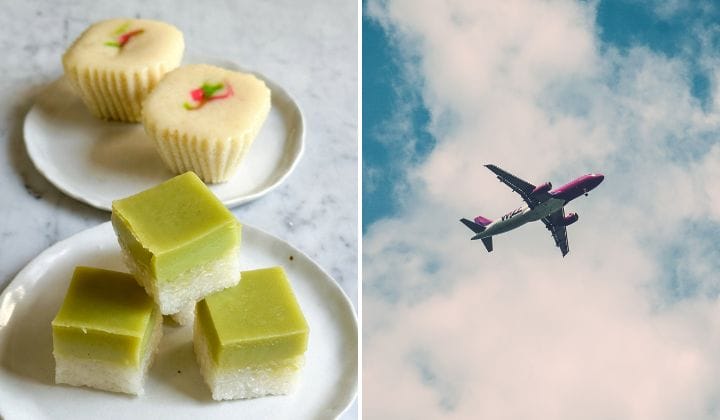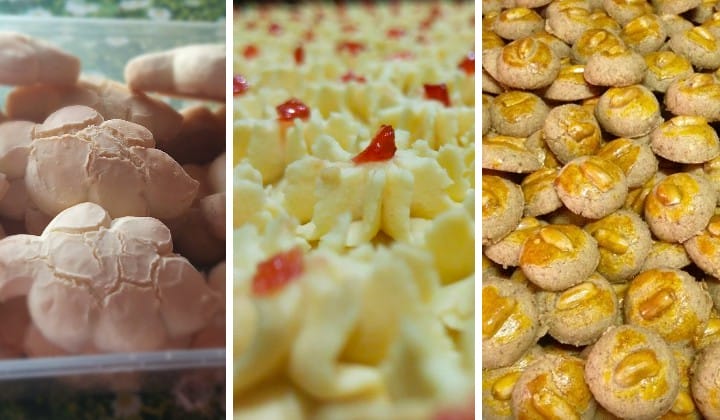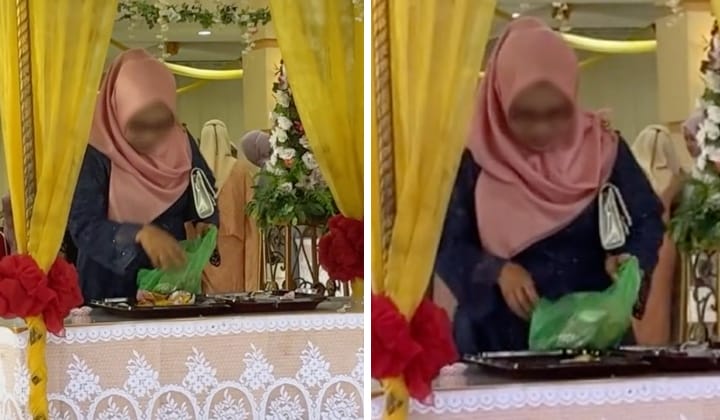Kuih: The Story Of Our Malaysian Heritage Of Flavours And Cultures
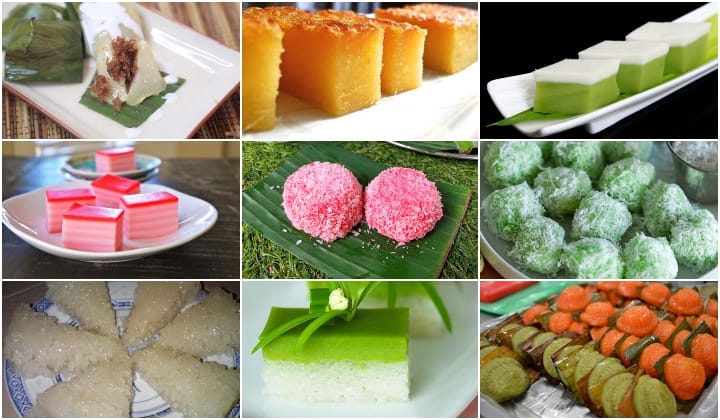
Subscribe to our Telegram channel for the latest stories and updates.
It’s ramadan again, and what is this festive season without a little kuih-muih. Here’s a short selection of some of our favourite delectable treats.
Kuih Kochi

Found in Javanese, Malay and Peranakan cuisine, kuih kochi is made from glutinous rice flour, and stuffed with coconut fillings with palm sugar.
Kuih Bengka
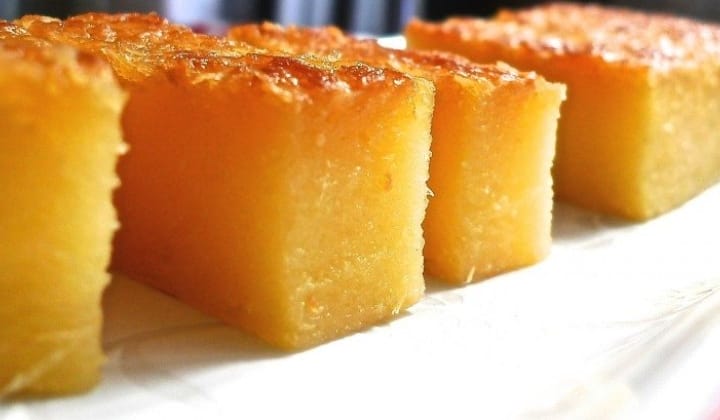
A sweet, traditional Malaysian-Nyonya kuih. Kuih Bengka is made of cassava (tapioca), coconut milk, sugar and water. Semi-soft, chewy and fragrant. It has an inviting aroma from the pandan leaves, eggs and coconut milk.
Kuih Talam
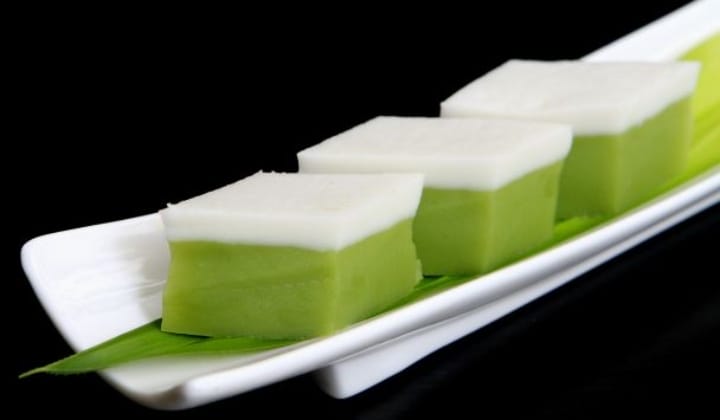
A kuih of two layers. Kuih talam’s top consists of a white layer made from coconut milk and rice flour, whereas the bottom layer is green and is made from green pea flour flavoured with pandan.
Kuih Lapis

An Indonesian delight, Lapis means “layers”. A traditional snack of steamed colourful layered soft rice flour pudding. This steamed layered sticky rice cake or pudding is quite popular in Indonesia, and also can be found in the Netherlands through their colonial links. Kuih lapis is also very popular at home in Malaysia, and also neighbouring Singapore, and Brunei. It was introduced by the Sino-Burmese to Lower Myanmar, where it is known as kway lapay or kway lapaysa.
Kuih Sago

Made from tiny tapioca pearls and rose flavouring, it is then coated with grated coconut. Kuih sago is soft and bouncy.
Ondeh Ondeh
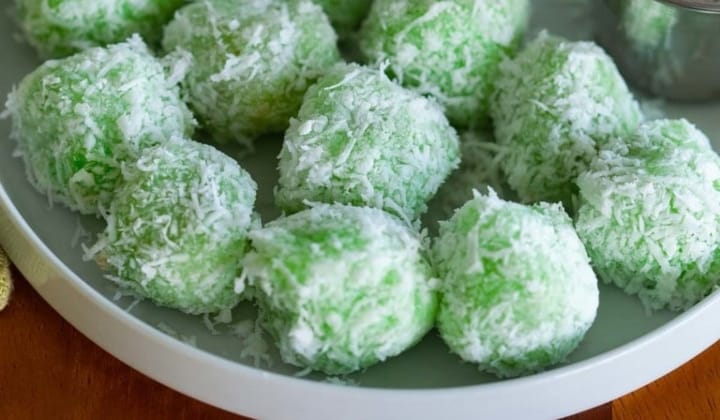
Ondeh ondeh is known as kelepon in Indonesia, it is a snack of sweet rice cake balls filled with molten palm sugar, flavoured with pandan, and coated in grated coconut. Of Javanese origin, the green-coloured glutinous rice balls is one of popular traditional kuih in Indonesian cuisine.
Kuih Pulut

Sometimes known as Bee Koh, kuih pulut is often made particularly during Hari Raya. Sweet and sticky, the kuih comes in two types, white or brown, depending on whether white sugar or brown sugar is used. The difference between the Nyonya bee koh and the Malay kuih pulut is in the texture of the rice grains. In the Nyonya bee koh, the rice grains are fully softened while in the Malay kuih pulut, you can still feel each grain.
In Penang, it is one of the desserts offered by the Taoists to the Jade Emperor on his birthday, which falls on the 9th day of the 1st lunar month, coinciding with the 9th day of Chinese New Year
Kuih Seri Muka

Made of glutinous rice, coconut milk, sugar and pandan leaves, kuih seri muka is a Malay and Nyonya kuih. It has an alluring natural green colour.
Kuih Koo (Angku)

Sometimes know as Angku, kuih koo is a small dark orange oval nyonya delicacy which is made with glutinous rice flour wrapped with green bean filling. Kuih koo has a high ritual value and it is commonly used for Chinese prayers and served during baby full moon parties. It has a sticky sweet texture and is sometimes enjoyed with a cup of Chinese tea. It’s even better overnight as you can pan-fry the leftover until the skin becomes golden brown.
Rempah Udang
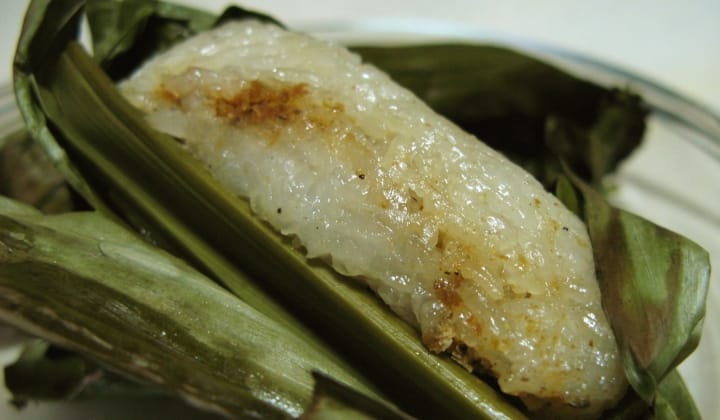
It is a traditional Peranakan dumpling dessert snack. Rempah udang typically comes as an oblong-shaped glutinous rice roll, filled in the middle with shrimp paste, wrapped in a pandan leaf. It is sometimes wrapped in banana leaves. The rice used is mixed with coconut milk and is sometimes coloured with the blue pea flower. It is similar to the Indonesian lemper.
Hope you enjoyed our selection of kuih today. Happy buka puasa-ing.
Share your thoughts with us on TRP’s Facebook, Twitter, and Instagram.




